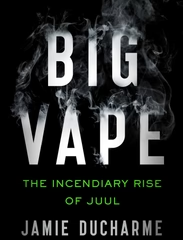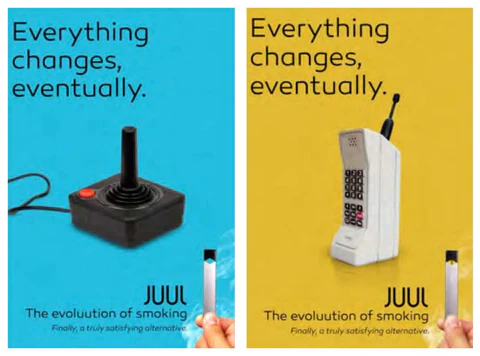Currently Empty: $0.00
There’s a new book out chronicling the fascinating but cautionary tale that is the company Juul. Written by Jamie Ducharme, a reporter for Time Magazine, and titled, Big Vape: The Incendiary Rise of Juul, the book hit shelves on May 25th.

Juul has earned the wrath of regulators, politicians, and most of the rest of the vape industry–and for good reason. The company is facing hundreds of lawsuits, many of which allege that Juul purposefully designed and marketed its products in order to appeal to and hook a new generation of youth.
The co-founders of Juul, James Monsees and Adam Bowen, claim that their motive in starting the company was to offer adult smokers a better alternative and that they never meant to go after underage users. Some of Juul’s marketing tactics, however, fly in the face of that stated intention.
For example, a 2020 lawsuit filed by the Massachusetts Attorney General contends that Juul purchased ad space on Nickelodeon, the Cartoon Network, and in Seventeen Magazine–where there can be no doubt about the age of the intended audience the company was going after.
Juul was also caught paying $10,000 or more to a number of public and private schools, an entry fee that allowed them to participate in the school’s Education and Youth Prevention Program. The program was supposed “to educate youth on the dangers of nicotine addiction,” but, according to the book’s author, in at least one case it ended up with a Juul representative showing ninth graders how to use the cool new product.
The lawsuit also alleges that Juul rejected an ad campaign that was targeting mature adult smokers:

Juul fired the marketing firm that created those ads and instead went with this:

Juul also sent free Juul devices to celebrities, hoping to get them to hype the product and add to the coolness factor. Leonardo DiCaprio and Bella Hadid, who was just 19 years old, received Juuls free of charge among others.
Marketing to teens wasn’t the only thing Juul did that raised eyebrows. They also took a page from Big Tobacco and, using the addition of acids, converted the traditionally used form of vaped nicotine and transformed it into high octane nicotine salts. With a smoother throat hit, nicotine salts enabled the company to jack up nicotine levels to highs no one could have imagined before.
Prior to the rise of Juul, 3 mg/mL was the top selling nicotine level at most vape companies. Juul came out with 50 mg pods. The pods were confusingly labeled by weight instead of volume, but, when translated into milligrams per milliliter, the new Juul pods actually clocked in at a whopping 59 mg/mL.
Nicotine levels that high can literally produce a buzz and video clips of teens puffing multiple Juuls at one time quickly began popping up on social media. It was a cheap, legal high that teens could easily obtain at any corner store and, thanks to the ultra small Juul devices, easily conceal.
Juul’s own internal studies showed that the high nicotine levels hit the blood stream faster and with more power, producing a bigger nicotine hit to the brain. Like all drugs, the faster and more powerful the hit, the greater the potential dependence and soon, the device that was supposed to break the chains of nicotine addiction was hooking people who had never even smoked.
“They let history repeat itself, walking the path laid by Big Tobacco as they pushed out flashy advertisements, sent their representatives into schools, and, finally, accepted billions of dollars from the largest cigarette maker in the country,” wrote the new book’s author.
Indeed. Juul lost all credibility with many vapers when the company accepted 12.8 billion dollars from Altria, owner of the Philip Morris cigarette brand, officially making Juul a part of Big Tobacco, the very industry Juul’s founders claimed to be fighting.
Juul’s aggressive marketing tactics, a miniature and therefore easily concealed product that was available at stores frequented by teens, and the introduction of jacked up nicotine levels far higher than the 18 mg maximum most common before Juul came on the scene produced the perfect storm. The result: a growing number of underage vapers, intense regulatory scrutiny of the industry, and loads of bad press that affected the entire vape community.
The damage that Juul did to the vaping industry and to the advancement of the idea of using e-cigarettes as a harm reduction strategy cannot be overstated. The rise in teen vaping, which can be directly traced to Juul, has been used as a rallying cry to indiscriminately demonize vaping.
As a result, the luster of public health promise that vaping originally showed has been tarnished and the vaping industry is being slowly strangled to death by a crushing tidal wave of regulations that will undoubtedly take out the majority of e-liquids on the market. The FDA’s own estimate is that up to 87.5% of vape products will disappear. All this can be directly traced to the bad name vaping inherited primarily due to the carelessness and greed of one company.
Thanks, guys.
